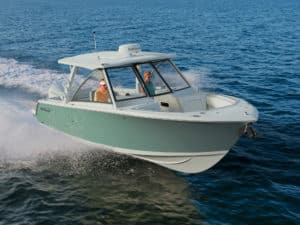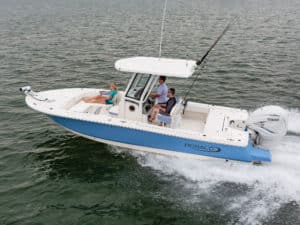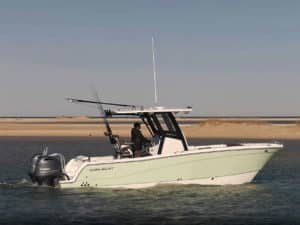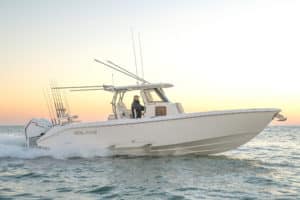
What makes a boat popular? What’s the wow factor, the cool aspect, the gotta-have-it feature that ignites the buying decision? Is it looks? Is it fishability? Is it status, style or value?
To build a list of the best saltwater fishing boats, we asked a handful of boat manufacturers to name their most popular and perhaps best offshore fishing boats. We then asked them to explain why they think those models have such high appeal. For some, the question seemed easy: The most popular model was simply purpose-driven. Builders known for their kingfish-tournament boats chose a hardcore-fishing model. For others, the decision proved more difficult. These offshore fishing boats are listed alphabetically and are great for any deep sea fishing excursion.
Boston Whaler 270 Dauntless
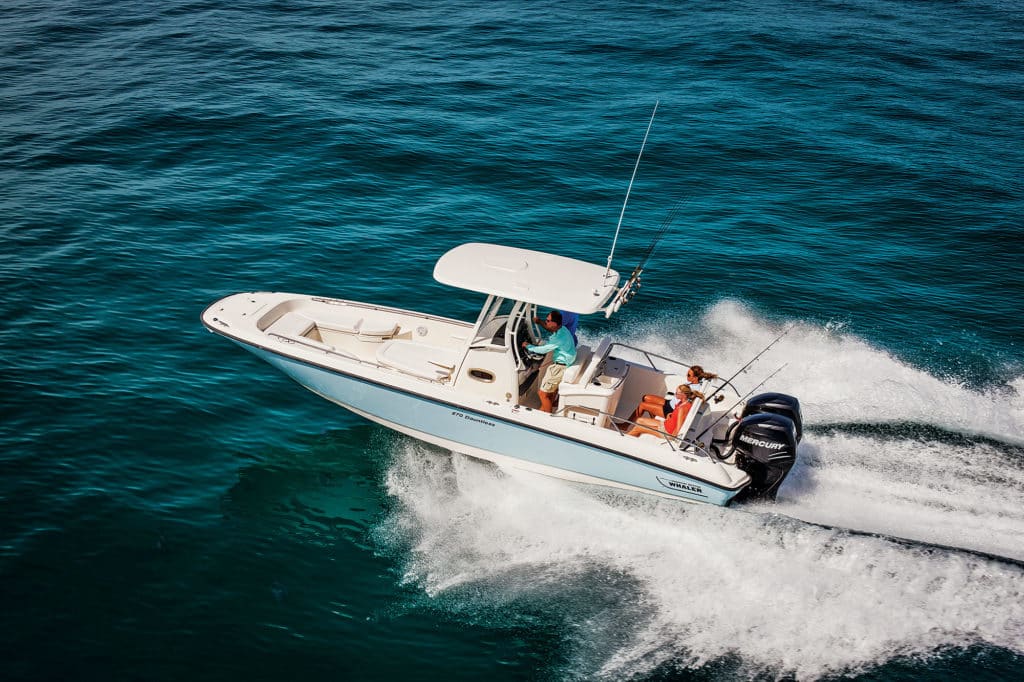
Introduced in 2012 as a boat that would fish offshore, nearshore and inshore, the 270 Dauntless has proven Whaler‘s fast-rising star, the company says. The spacious cockpit includes a leaning post with four rod holders and a 94-quart cooler. Fishing options include a deluxe helm station with a 30-gallon livewell, three-drawer storage and an integrated hardtop.
“The 270 Dauntless also features Whaler’s innovative aft bench seating, which converts smoothly and easily to form a huge casting platform or comfortable space to relax,” says Jeff Vaughn, vice president of sales. “A large storage garage forward of the console holds every bit of fishing and safety gear needed, and the top of this garage sports a wonderful lounge fit for a nap when the time comes.”
Standard rigging includes a 300 hp Mercury Verado with power steering, but anglers can bump up to a 350 Verado or twin 200 or 225 Verados with VesselView and power steering.
Cobia 296 CC
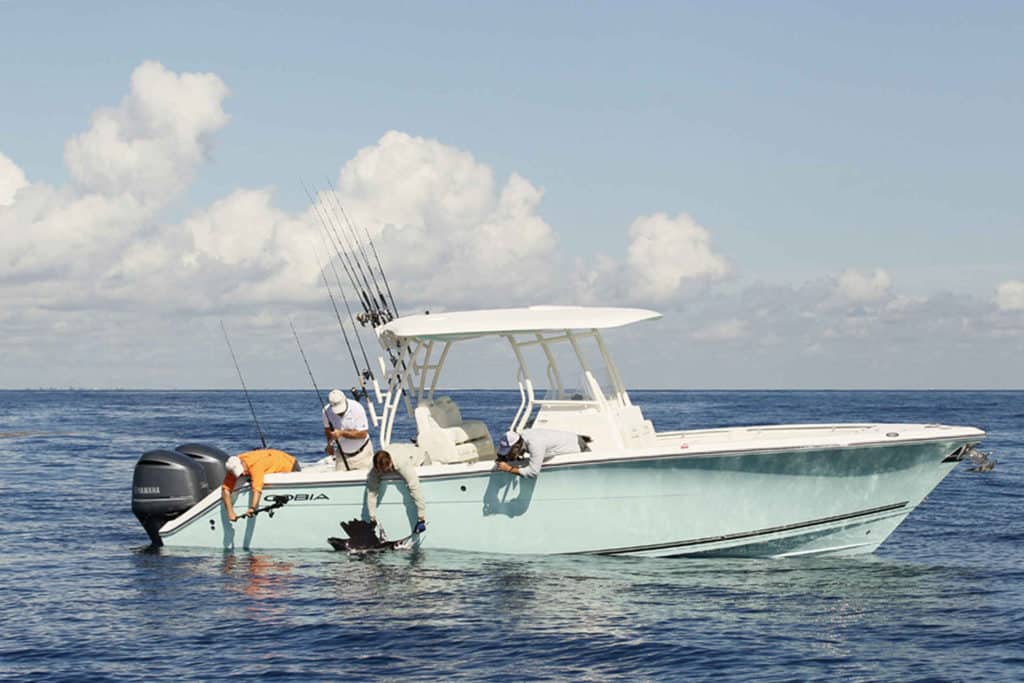
Cobia marketing director Charlie Johnson says the 296 CC had made its mark on customers because it’s laid out well and truly doubles as a hardcore fishing boat that runs well in seas and still offers plenty of comfortable features like seating throughout, a hideaway table at the bow, and a forward-entry console with a step-down head.
“We also tell customers to look under the hatches, in the bilge and at other places that are out of plain sight,” Johnson says. “When you do that, it’s easy to tell that we aren’t cutting corners or making compromises to total quality.”
The 296 CC debuted in 2008; it received a console redesign in 2013 and a new hardtop was added in 2014. The electronic bow table and bilge access came with 2015 upgrades, and seating has been improved twice in the last three years.
“Everything is where it should be, and the features have real utility, instead of just looking good on an order form.”
Everglades 435cc
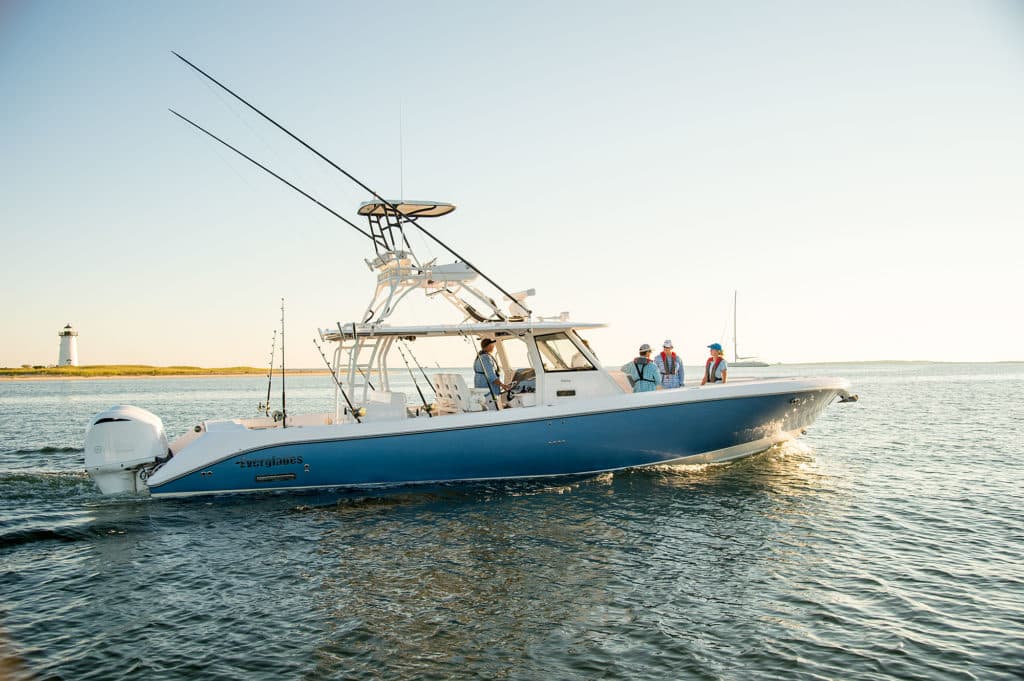
Versatility makes the 435cc Everglades‘ most-popular fish boat. “It has a tremendous amount of fishing features with more than 300 gallons of livewell, fish box and cooler storage,” says Shane Kwaterski, marketing specialist. “It has tons of rod and tackle storage, many creature comforts and amenities for cruising, a sizable cabin and unmatched fit and finish.”
The 435cc illustrates Everglades’ brand hallmarks. Built with the patented RAMCAP (Rapid Molded Core Assembly Process) construction technique, it also offers a fully retractable sliding-glass windshield and robust console, lifetime hull warranty and five-year stem-to-stern warranty, and completely finished surfaces above and below decks.
The 435cc is less than two years old, though it has seen recent upgrades to the cabin interior and vinyl options. Kwaterski said it instantly became a favorite upon debut.
Grady-White Express 330
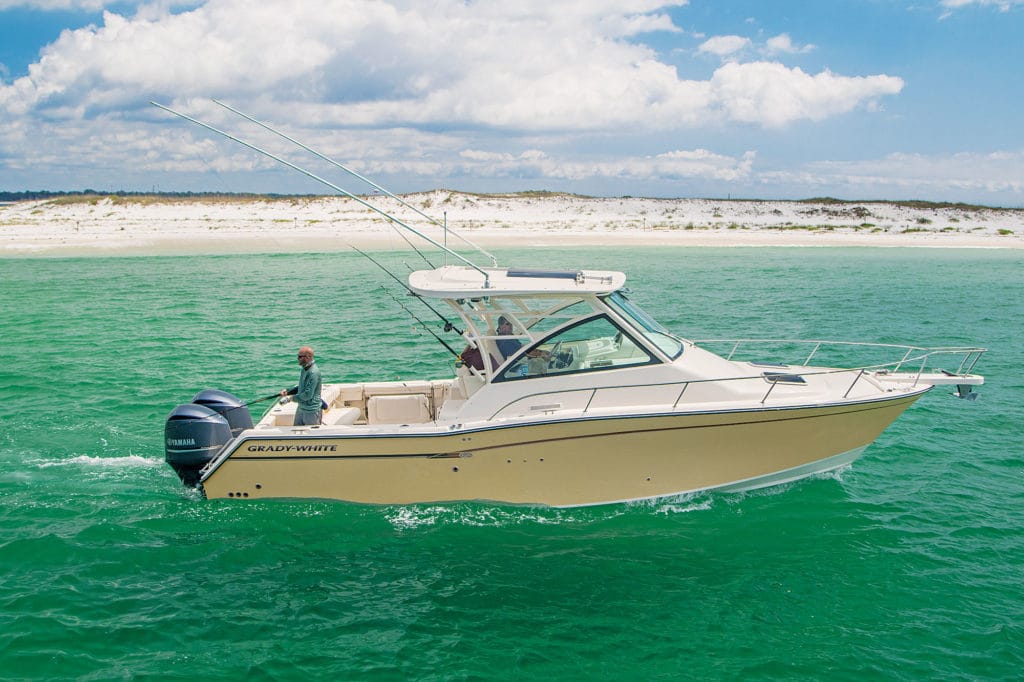
“Customers who own this boat say the center helm design makes it ideal for long offshore runs because of its superb visibility,” says Shelley Tubaugh, Grady vice president of marketing. “The arrangement of the cockpit, which offers a spacious area to work, and an ample full-column-distribution livewell at the perfect height for netting and rigging live baits make this express model truly a fisherman’s dream.”
Other notable features include the large seating area beneath the hardtop, as well as the aft seat that flips down for socializing back at the dock, Tubaugh says.
The Express 330 debuted in 2001 and was crowned Boat of the Year by Boating magazine, whose editors observed that the sport-fisher “broke the mold” and “[redefined] the offshore battlewagon … setting a new standard in quality and innovation.”
Grady makes upgrades each year to all its models. Along with those annual tweaks to the 330, Grady redesigned the helm and refreshed the cabin interior for 2015. For 2016, the company upgraded exterior seats and added its AV2 hardtop with an integrated windshield as an option. “With its broad appeal to fishermen, families and long-range overnight island-hoppers, this boat will remain a favorite for years to come,” says Tubaugh.
Invincible 36

Invincible launched its boat brand in 2007 and debuted this 36-foot center-console, with a Stepped-Vee Ventilated Tunnel hull designed by architect Michael Peters. The model steadily gained popularity despite the newness of the brand.
Invincible says this design — and its resulting ride and performance — sets the model apart among its peers and creates customer demand. Beyond that, the fit-and-finish and quality build draw anglers to the brand and to the 36.
Since 2007, Invincible has modified and upgraded the boat’s deck layout, center console and top, and “almost every feature from switches to pumps,” says Bill Cordes, director of sales. “Additionally, a new console design, side entry to the console, and the hardtop have been streamlined.
“Invincible is constantly improving, researching better materials, adhesives and production methods.”
While the 36 has dominated company sales during the last eight years, Cordes predicts the 39, introduced in 2014, should soon eclipse the 36 in popularity.
Jupiter 34 HFS
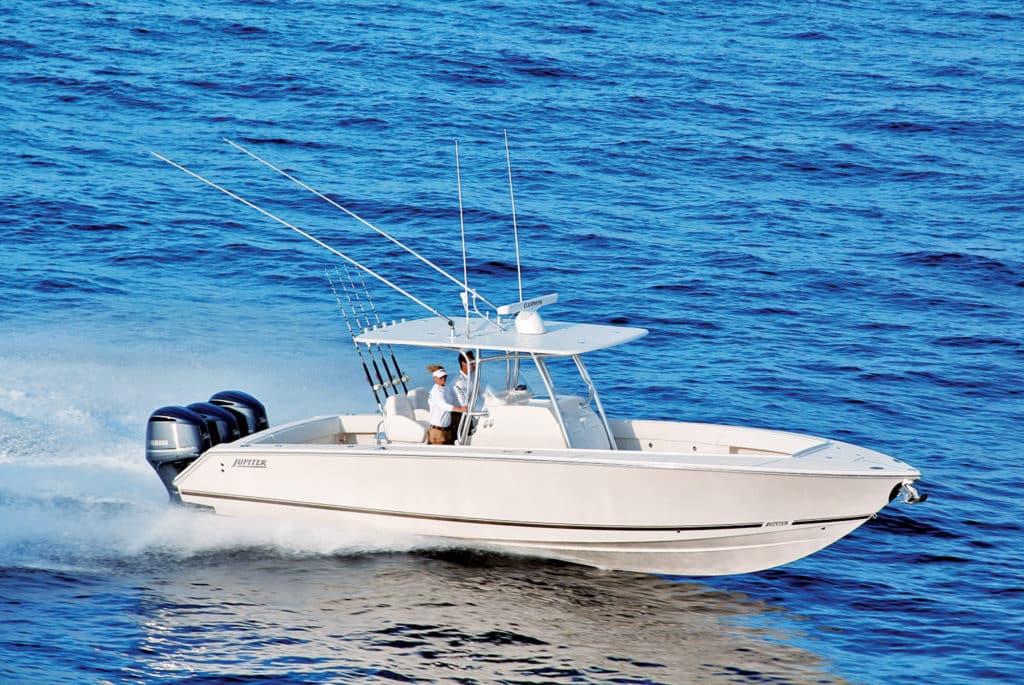
Jupiter‘s 34 Hybrid Forward Seating model evolved from the 34 FS (Forward Seating), which was introduced in 2007 to bridge the gap between the company’s 31- and 38-footers. The hybrid version debuted in 2013 and added standing area ahead of the forward seating for more comfortable fishability and easy access to the anchor locker.
Prior to 2013, the 38 overshadowed the 34 in sales. But once the HFS version arrived, the 34 became the top gun. “The 34 HFS is such a popular model due to its ability to be big yet small,” says Todd Albrecht, Jupiter’s vice president of sales. “It’s big enough to make a crossing in virtually any sea condition, but still small enough to trailer and store in a rack.”
Because of its popularity, the HFS has become the model’s standard configuration for 2016. Jupiter increased the 34’s forward cockpit length by 10 inches to allow for a larger console with a sun lounge and broader passageways.
The company also added 10 inches to the bilge hatch for easier access to onboard systems. The redesigned transom area opens a path in front of the engines and offers molded-in steps for easy boarding.
“We are on a constant quest to build a better boat, and are always looking for the best-quality products, from resin to rod holders,” Albrecht says.
Pursuit OS 385
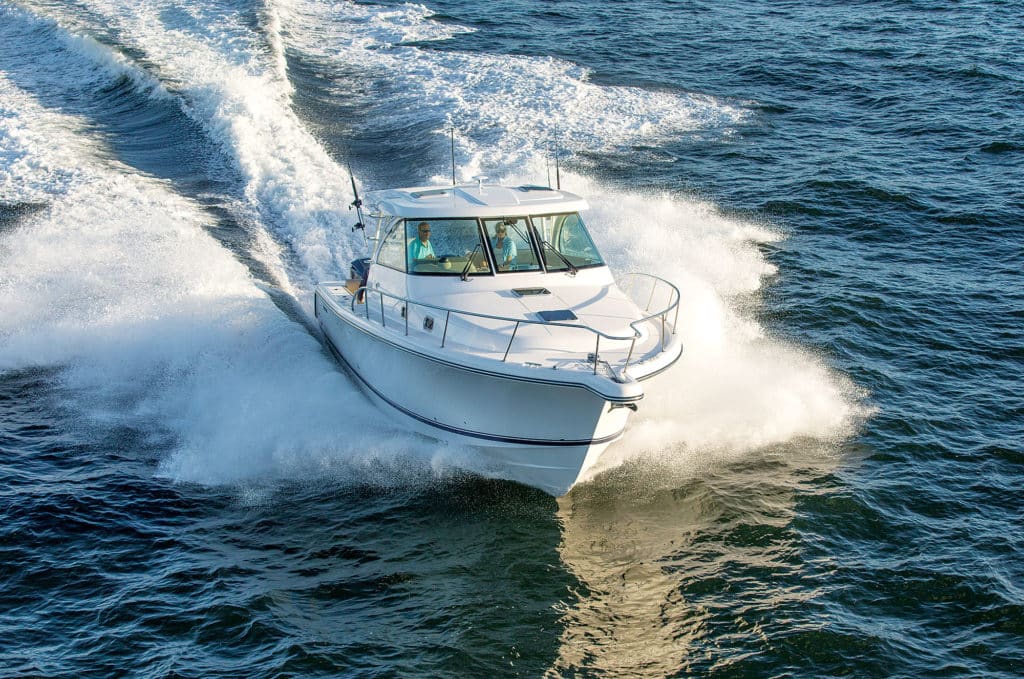
The OS 385 blends classic outboard-express features with modern conveniences, Pursuit says. “The attraction of this boat is a serious number of hardcore-fishing features matched with a very high-quality construction process, timeless styling and luxury appointments that appeal to fishermen and families,” says David Glenn, Pursuit marketing director.
This model’s wide-open cockpit and 13-foot beam create a cavernous aft deck for fishing. Pursuit added loads of rod and tackle storage, in-floor insulated fish boxes with overboard drains, a 50-gallon livewell, a 300-quart refrigerator/freezer, and specific lamination and backing-plate applications for fighting chairs, rocket launchers, downriggers or deep-drop rigs.
The OS 385 debuted in 2011 as an upgrade to the OS 375, and featured some subtle hardtop design changes and a new interior layout. Until that time, the 375 had been the bestseller.
“Pursuit Boats is also backed by nearly 70 years of boatbuilding experience,” Glenn adds. “Three generations of the Slikkers family, along with a dedicated team of industry professionals, strive to build that same lasting value and quality into every Pursuit boat.”
Regulator 28
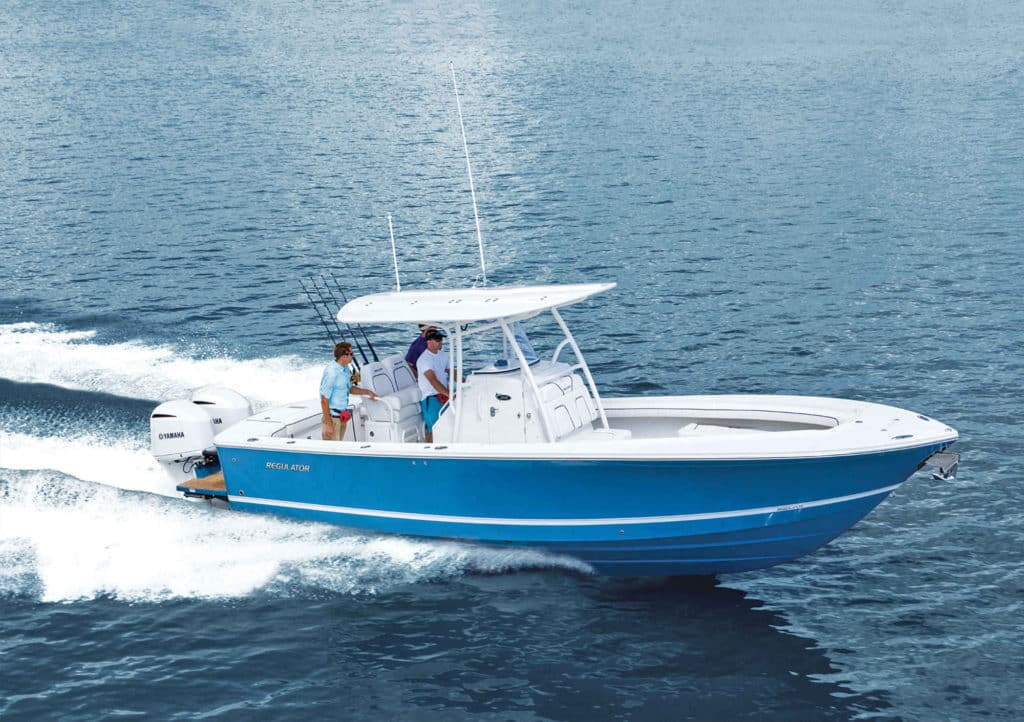
The 28 was designed with input from customers who wanted a bigger, wider center-console with more power, a transom door, a level deck, and even more standards and options than previous models, Regulator says. Incorporating a bracket aft delivered greater running surface and allowed engineers to pull the console back for more deck space forward.
The model’s design and layout simply meet the needs of fishermen and cruisers, Regulator owner Joan Maxwell says. The weight and construction generate a more consistent, predictable ride and a 400-mile range.
Introduced in 2011, the 28 quickly became the brand’s top seller. As Regulator does across its model line, it added more standard equipment and options each year to the 28. Upgrades have included white-painted engines and a vanity sink in the head. For 2016, Regulator added options such as Taco Grand Slam 380 outrigger bases with 18-foot telescoping poles, removable forward-seating backrests, and factory-installed Garmin or Raymarine electronics.
“The 28 displays the signature Regulator features that have wowed customers and fans since the beginning, and the standout favorites that have built the brand’s reputation as a serious offshore sport-fisher,” Maxwell says.
Scout 420 LXF
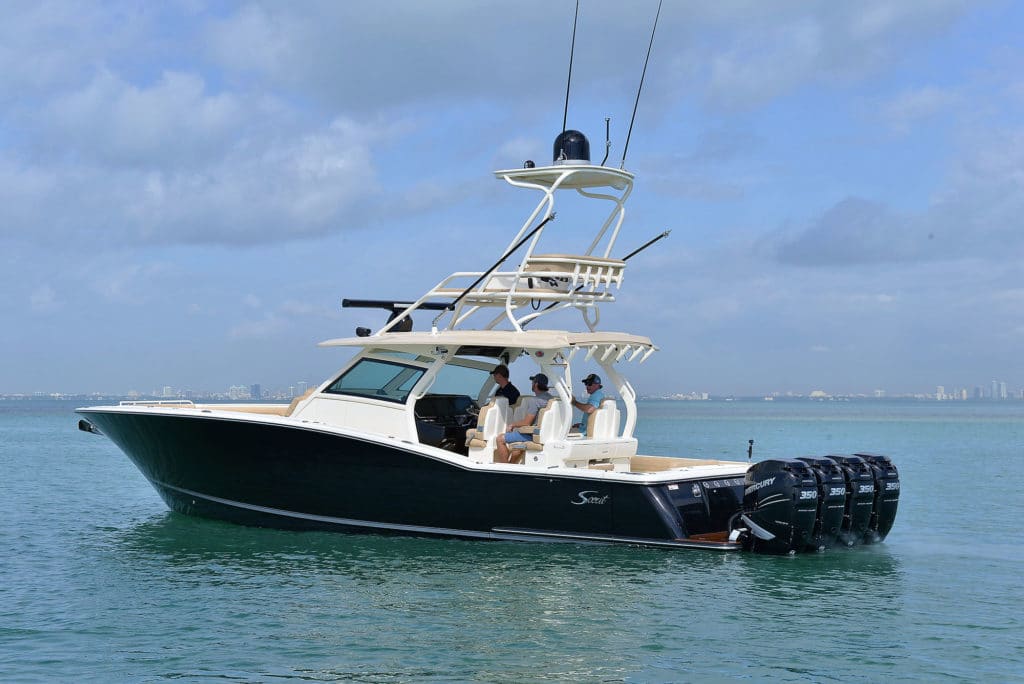
Introduced just last year, the 420 LXF was an immediate fan favorite, Scout says. “It became our most popular model when it was introduced, and it’s only grown more popular since its introduction,” says national sales manager Alan Lang.
“The 420 has been featured in many shows and publications, it has also been the cover boat for many magazines.”
The 420’s “sheer sexiness,” its lines and its yachtlike amenities attract discriminating fishermen. Then, they discover the speed and fuel efficiency, the Seakeeper option, the digital-control system, the performance leaning-post option and many other unique features, Lang says.
“It has many amenities that simply aren’t available on most coastal-fishing boats of this size,” he says.
Sea Born FX22 Bay
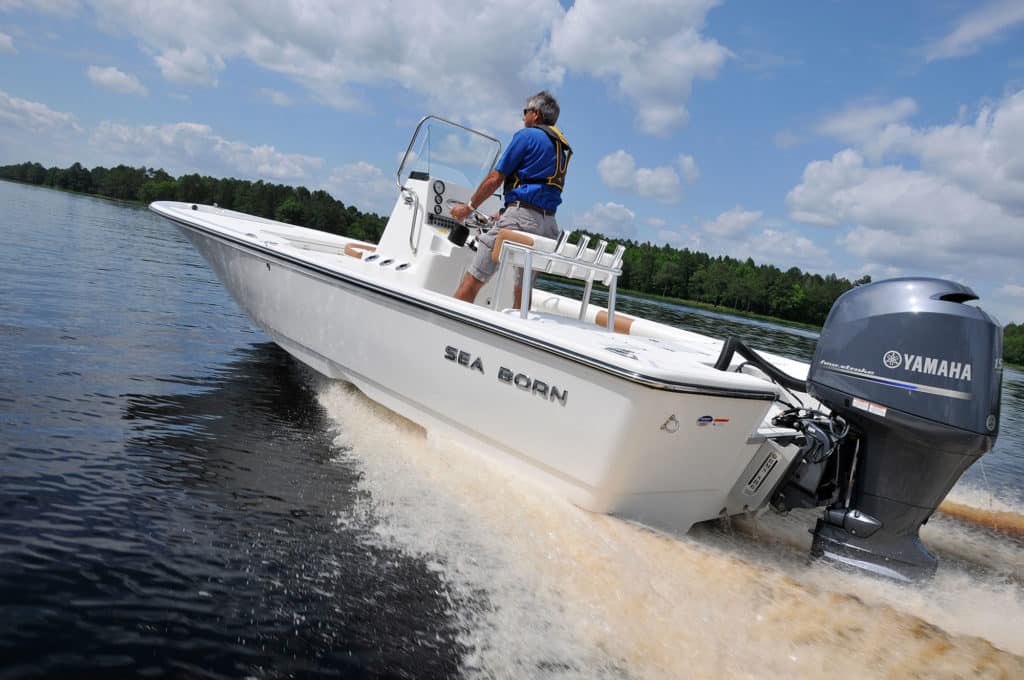
Sea Born‘s FX22 Bay remains in high demand because it’s not too big and not too small, it’s “right inside the sweet spot for the angler who wants a large front deck, multiple wells and plenty of rod holders atop a double-stepped hull,” marketing director Sean McCoy says. “The FX22 offers improved performance, is affordable to own and operate and remains fun to fish with a smooth, comfortable ride.”
McCoy says Sea Born’s brand reputation starts with its approach to ownership of every boat. “We take that one step further and act as if each boat we build will ultimately be our own,” he says. “We aren’t just building boats, we’re building a gateway to a lifestyle on the water.”
The FX22 debuted in April 2014 and has seen updates in the form of modular leaning posts and a Frigid Rigid below-deck hatch. McCoy says demand for this bay boat has grown since the economic recovery began and buyers began seeking multipurpose fish boats that could fish and cruise.
SeaVee 340
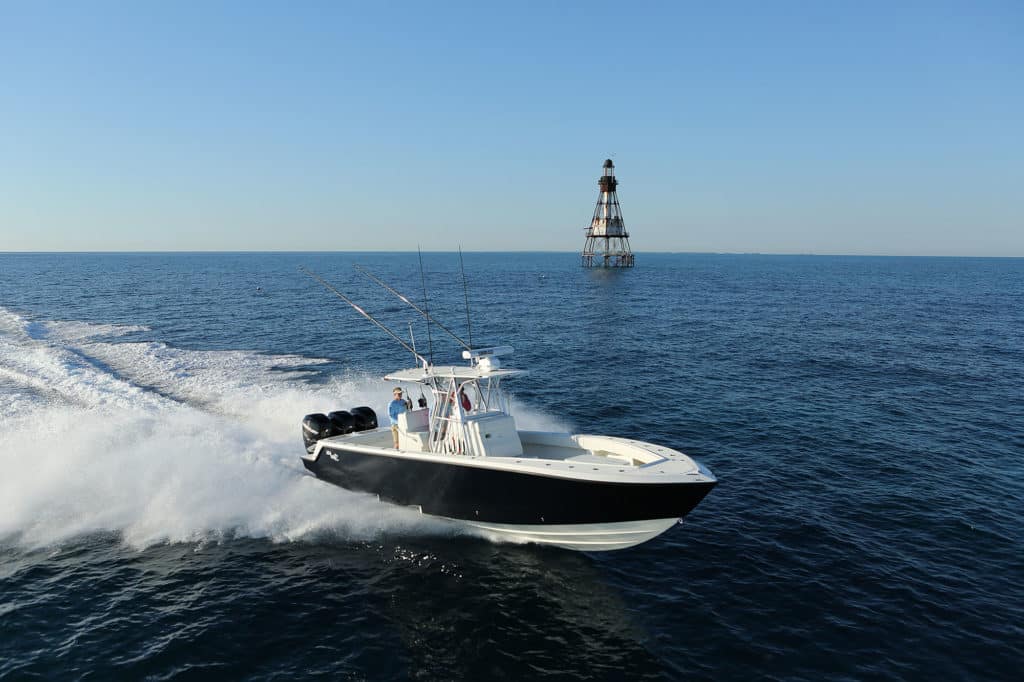
SeaVee‘s 340 is a versatile offshore boat that’s trailerable and can accommodate twin or triple outboards up to 1,200 hp, says John Caballero, marketing director. It’s offered in two configurations: as a hardcore tournament fishing boat or as a family friendly cruiser with custom seating and head/shower facilities.
SeaVees are sold factory direct to the customer rather than through dealers, so they’re built to the exact specifications of the buyer, Caballero says.
The first 340 rolled out in 2001 and has been retooled numerous times with performance enhancements. In late 2014, its twin —the 340Z — was launched as a stepped-hull version of the original. The model has topped the popularity list since its inception because it offers so many features for such a wide variety of buyers, all in a trailerable package.
Yellowfin 36
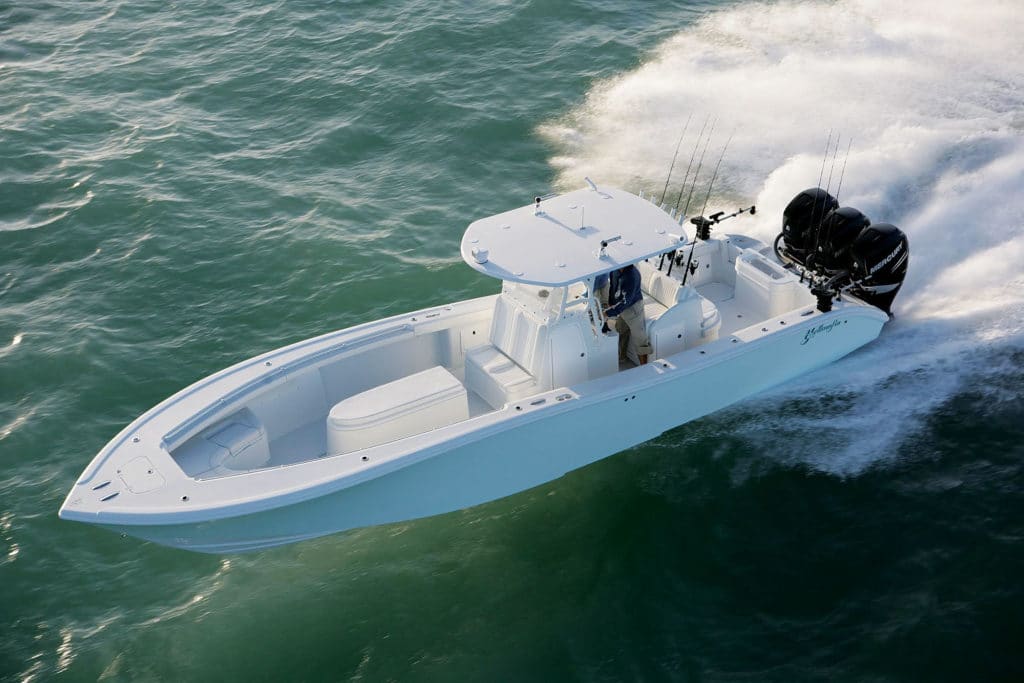
The rough-water capability, ease of trailering and thoughtful fishing layout of Yellowfin’s 36 have made this model a top seller, says company owner Wylie Nagler. “Our construction techniques [and] electrical systems set us apart. We have a best-of-everything mentality,” he says.
Yellowfin introduced the 36 in 2003. The model received a face-lift in 2009, at which time its floor layout changed and it acquired a larger livewell aft and additional fish boxes.
“This is the boat that has dominated the Southern Kingfish Association and other tournament events for over a decade,” Yellowfin states on its website.
Yellowfin also offers the option of twin or triple outboards on this model, and provides console, leaning-post and soft- or hardtop choices for anglers to customize the 36 to their specific fishing needs.

